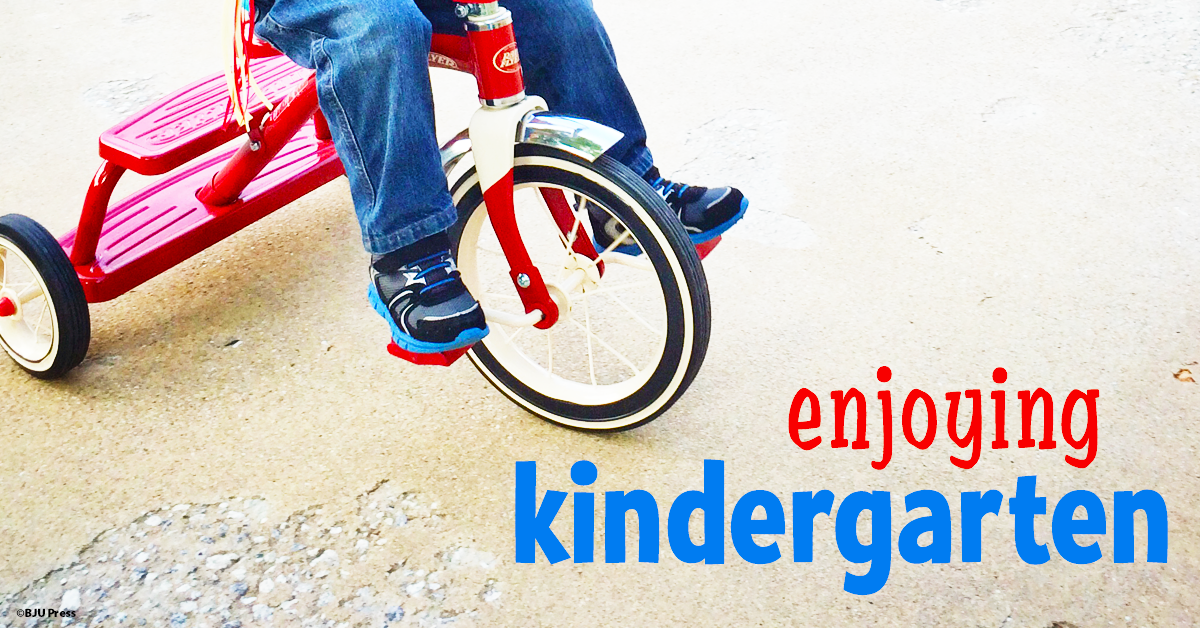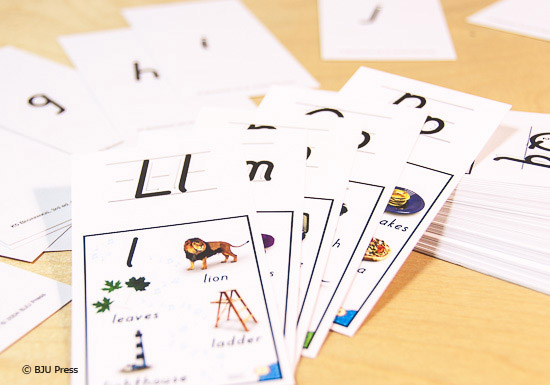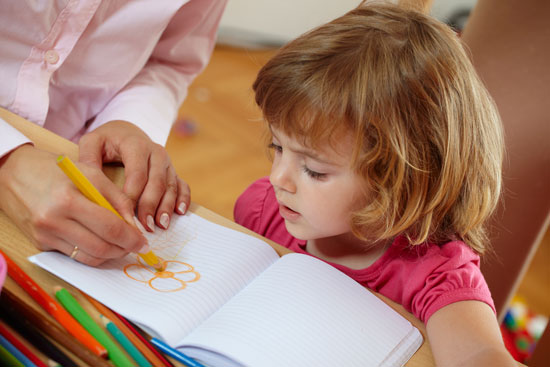
Both my school-age daughters love to learn. I knew my firstborn would; she was the child that could sit and listen to me read for hours. But I was a little more nervous when I sent my second daughter off to K4 last fall. As my active child, she never stops moving (or talking) all day. I wasn’t sure how she was going to handle sitting and listening, and I was afraid that she was going to come to hate school from the very beginning. The fact that she too loves to learn is a wonderful surprise and is no doubt a result of both the curriculum the school used (BJU Press Footsteps for Fours) and her amazing teacher.
My daughter’s teacher was truly amazing, and she taught me a lot about teaching kindergarteners and instilling in them an early love for learning. Below are some of the things I learned that you could apply in your teaching.
1. Divide Up the Learning
A lot of kindergarteners won’t be able to sit for long periods of time, so divide up your lessons into fifteen- to twenty-minute segments. These frequent breaks will help keep young minds fresh and focused.
2. Make Time for Play
Remember that play is a big part of learning for four- and five-year-olds, so make time for it in your daily schedule. When the weather is nice, allow them to play outside and work on improving their strength and coordination as they run, throw balls, or play on playground equipment. Indoor activities such as role-playing or building with blocks are also helpful because they help build social and problem-solving skills.
3. Engage the Senses
Lessons that engage multiple senses not only help concepts “stick,” but they also help make learning more fun. The teacher’s editions that correspond to the BJU Press kindergarten curricula include a lot of ideas for multisensory learning activities (such as divvying up snacks in Math K5 to illustrate parts of a whole). Additional ideas can be found on homeschooling blogs and Pinterest boards.
Kindergarten is a special time. During the kindergarten years, your children are going to be introduced to a lot of concepts for the very first time, and you’ll be there to witness those special moments—when they succeed in writing their names for the first time, when they read their first words, and when they realize they can count to a hundred.
Enjoy these years even more by helping your child enjoy them too.



